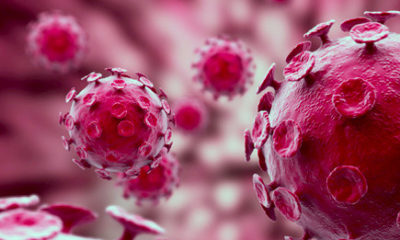News
World AIDS Day: What Part Can We Play?
 “AIDS is far more than a health crisis. It is a threat to development itself.” — Kofi Annan
“AIDS is far more than a health crisis. It is a threat to development itself.” — Kofi Annan
AIDS and Africa: The effects of an epidemic
As a continent, we as African’s face many daily challenges in terms of governance, inadequate infrastructure and finance and off course health. The Acquired Immune Deficiency Syndrome (AIDS) epidemic is one of, if not the biggest, health challenges for the African continent in the 21st century.
Today, 1st December 2010, the whole world pays notice to the issue of AIDS and how it affects us individually and collectively. According to UNAIDS statistics, an estimated 22.5 million people are living with HIV in Africa- around two thirds of the global total. In 2007 alone, an estimated ten million young Africans between the ages of 15 and 24 were said to be infected, including an estimated 3 million children. In 2009 around 1.3 million people died from AIDS in sub-Saharan Africa and an additional 1.8 million people became infected with HIV. Statistics also suggest that about 14,000 new HIV infections occur daily around the world, with 90% of that figure originating from developing countries. Since the beginning of the epidemic, more than15 million Africans have died from AIDS. The statistics are indeed grim!
In Nigeria, HIV prevalence is low (3.6%) compared to the rest of Africa. However, because of its large population, this equates to around 3.3 million people living with HIV.
The effects of HIV and AIDS associated deaths in the continent are not restricted to health alone. For example, when a key income earner of a family sadly dies from AIDS, this may in some cases, lead to severe hardship for the family and resulting social stigmatization. The HIV and AIDS epidemic also has a negative effect on labour and economic growth and productivity. This is because a vast majority of people living with HIV and AIDS in Africa, fall within the working class age group (15-49). In some areas in Africa the AIDS epidemic has also led to food insecurity as agricultural work is abandoned due to resulting household illness caused by HIV.
All medical sources agree that the key to preventing this disease is through awareness raising and regular testing. It is difficult to prevent something you aren’t aware off and many international and national organizations have done their part to promote awareness on the killer disease.
Here are the key facts;
What is AIDS?
AIDS (Acquired Immune Deficiency Syndrome) is caused by the virus HIV (Human Immunodeficiency Virus (HIV). HIV gradually attacks the immune system cells and progressively damages them, making the body more vulnerable to infections, which it will have difficulty in fighting off. It can take years before HIV has damaged the immune system enough for AIDS to develop. It is at the point of very advanced HIV infection that a person is said to have developed AIDS
How is HIV Transmitted?
HIV is transmitted through direct contact of a mucous membrane or the bloodstream with a bodily fluid containing HIV, fluids like blood, and breast milk. There are numerous examples of how such contacts can occur. Some of which are, through unprotected sex, exchange of fluids between mother and baby during pregnancy, delivery and breast feeding (where the mother is infected), usage of infected unsterilized sharp objects and through the use of infected blood products.
Is there a Cure for AIDS?
There is NO CURE for AIDS. There are only treatments which can help prolong the time from which HIV develops into full blown AIDS. Such treatments are called Antiretroviral drugs. These drugs ensure that the levels of HIV in the body are low, thus allowing enough time for the immune system to recover and work effectively.
AIDS Action Plan
Now that we know the facts, what can we do? Today is World AIDS Day, a day set aside to raise awareness of the killer disease. Awareness is key in fighting the spread of this disease and the first step is to ensure you as an individual is adequately protected and then by spreading the word to friends and family. The following steps are also helpful;
A- Abstain, Awareness and Advocate! Abstain from unprotected sex, avoid the usage of unsterilized sharp objects, be an advocate for the AIDS test and awareness. Just because your partner looks ‘clean’ does not mean they are HIV free! AIDS is no respecter of persons! It can affect anyone regardless of social standing.
I- Initiate! Initiate ways to help those suffering from the disease. It’s one thing to be living with HIV and another to live what years you have left with the social stigmitisation that follows. We as individuals must be active in helping NGO’s and other organizations set up to fight the disease to support those who live with the virus. As well as encourage and support programmes which facilitate awareness of the disease.
D- Do not live in denial! Denying the fact that HIV/AIDS exists does not prevent it from taking its toll on the human body. If you, your partner and other family have not been tested, get yourself tested today! This is a critical tool for preventing the spread of the disease.
S – Stay committed! Even though AIDS day takes place once a year, it is a disease we must continually avoid in our daily lives. We have already outlined above the key ways of transmitting the virus. So we must continue to be aware. If you go to the hospital make sure new syringes are used for any treatment given, also make sure any blood transmission given have been properly screened. Practicing safe sex is also important.
All facts and figures taken from http://www.avert.org and Joint United Nations Programme on AIDS (UNAIDS: http://www.unaids.org/en/default.asp)
Photo Credit: http://www.topnews

























